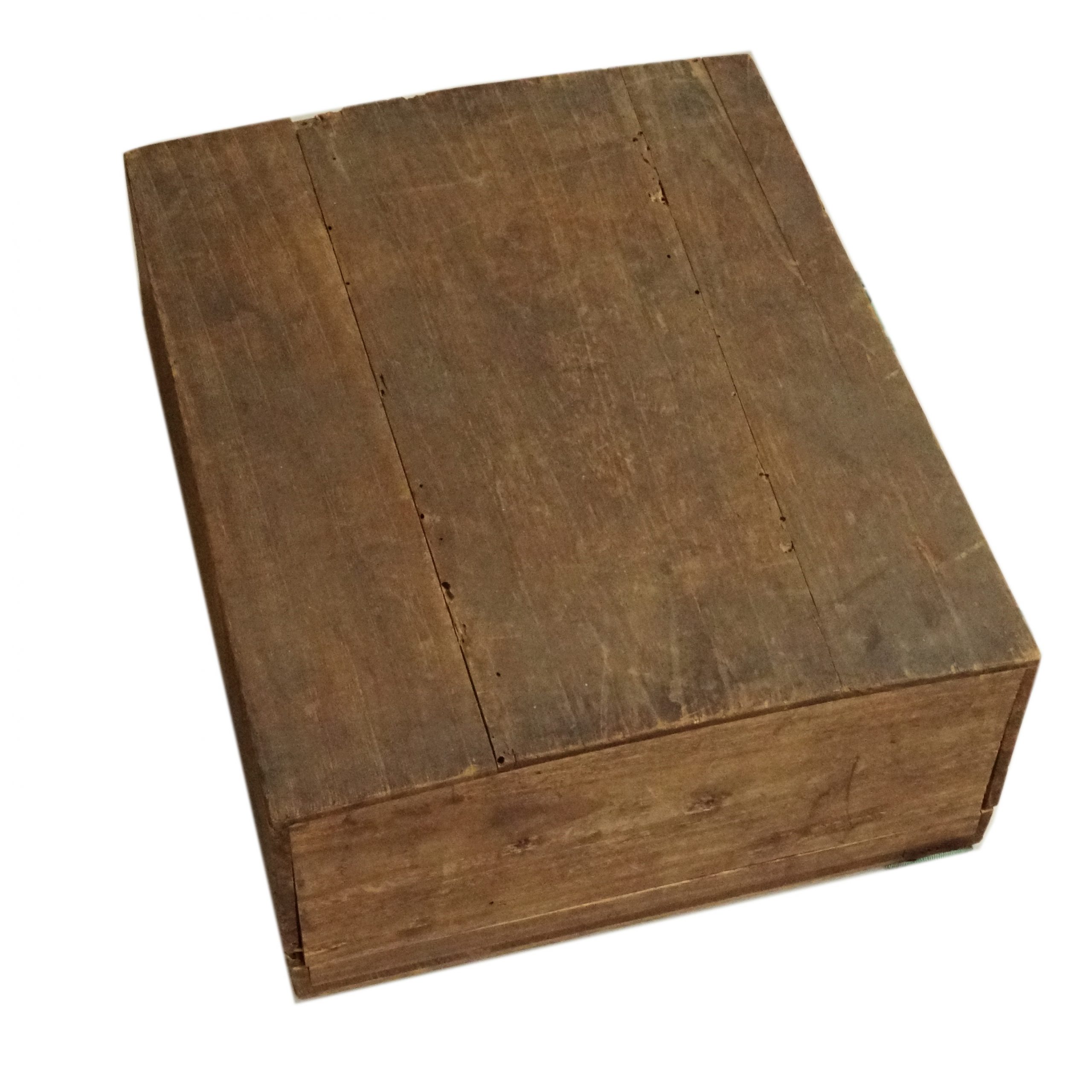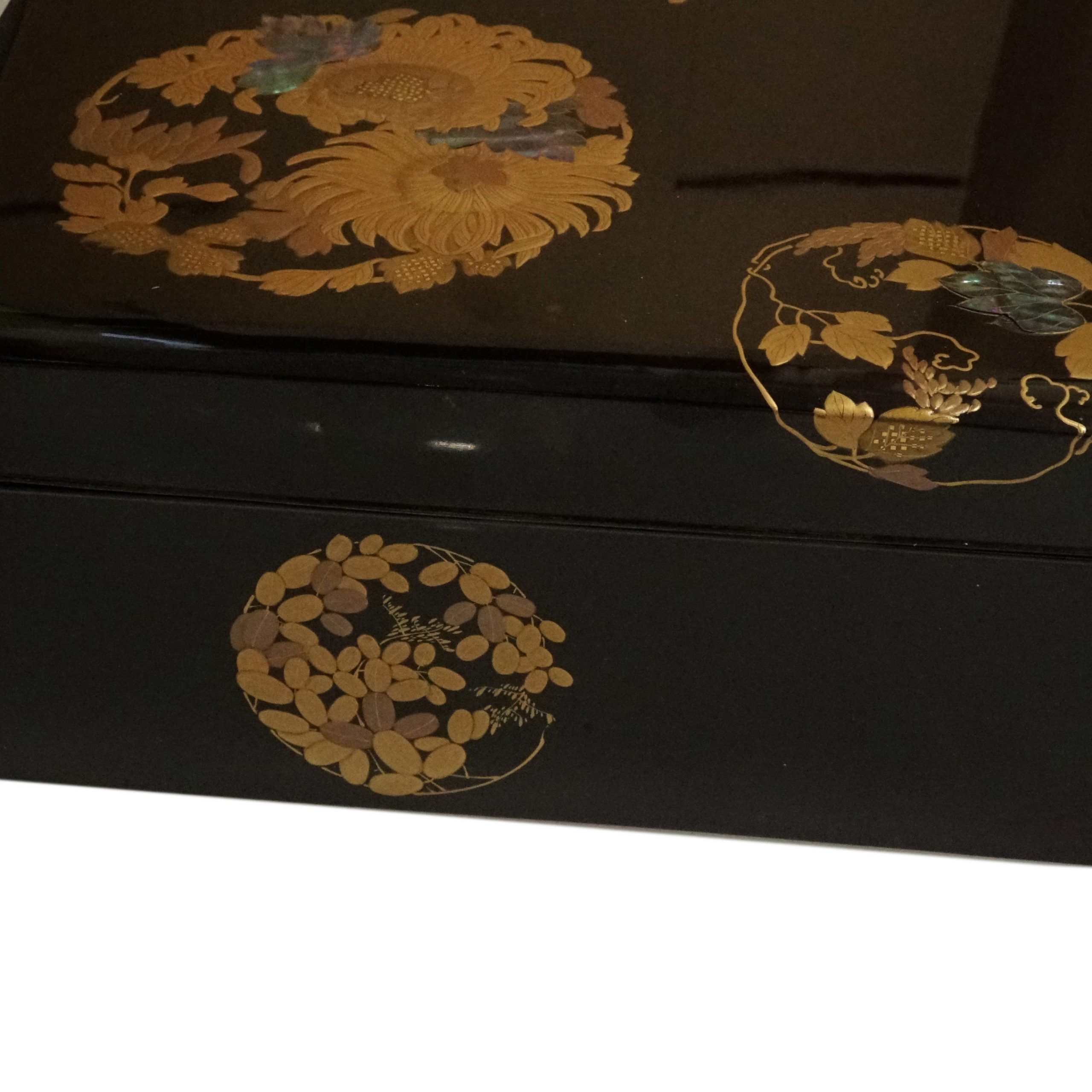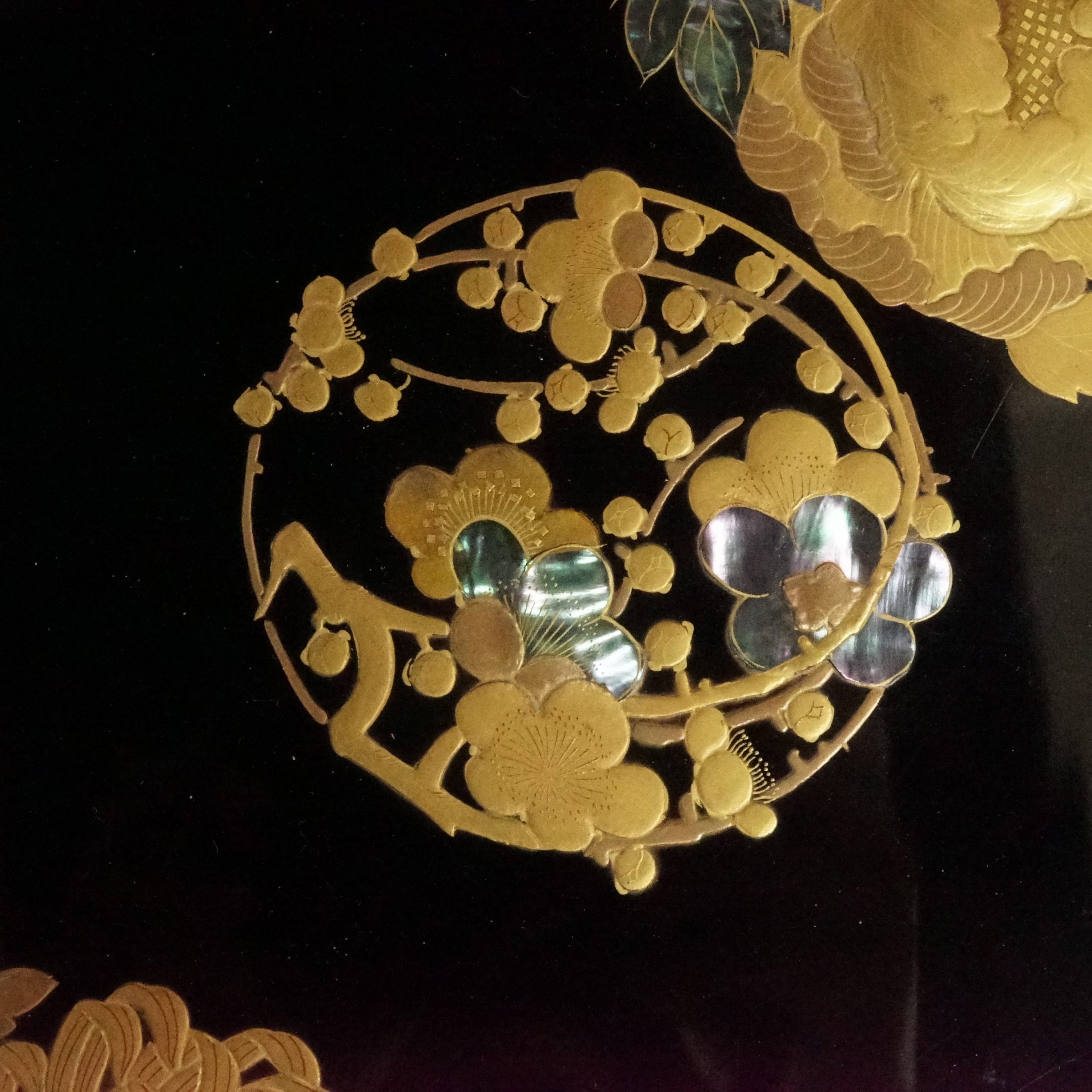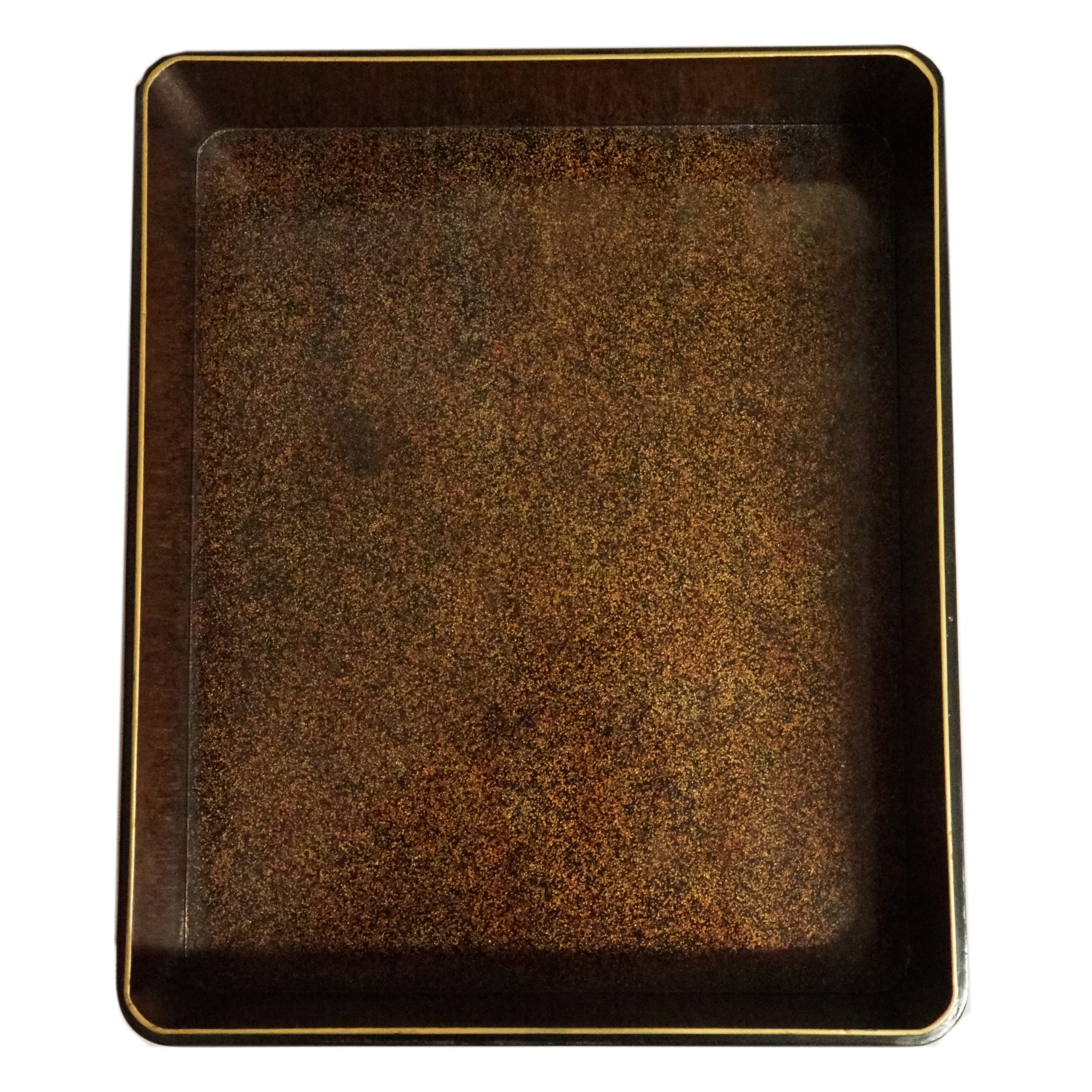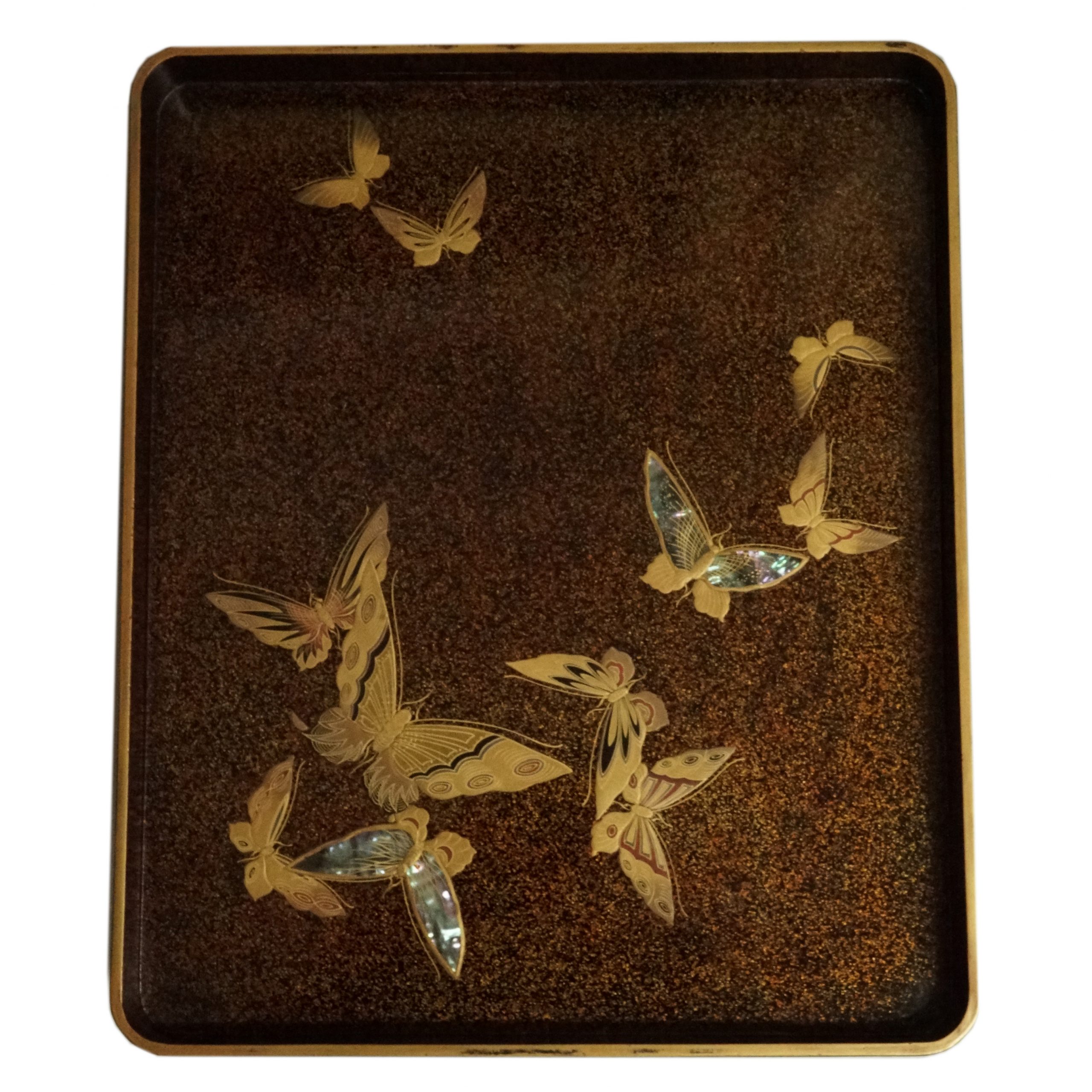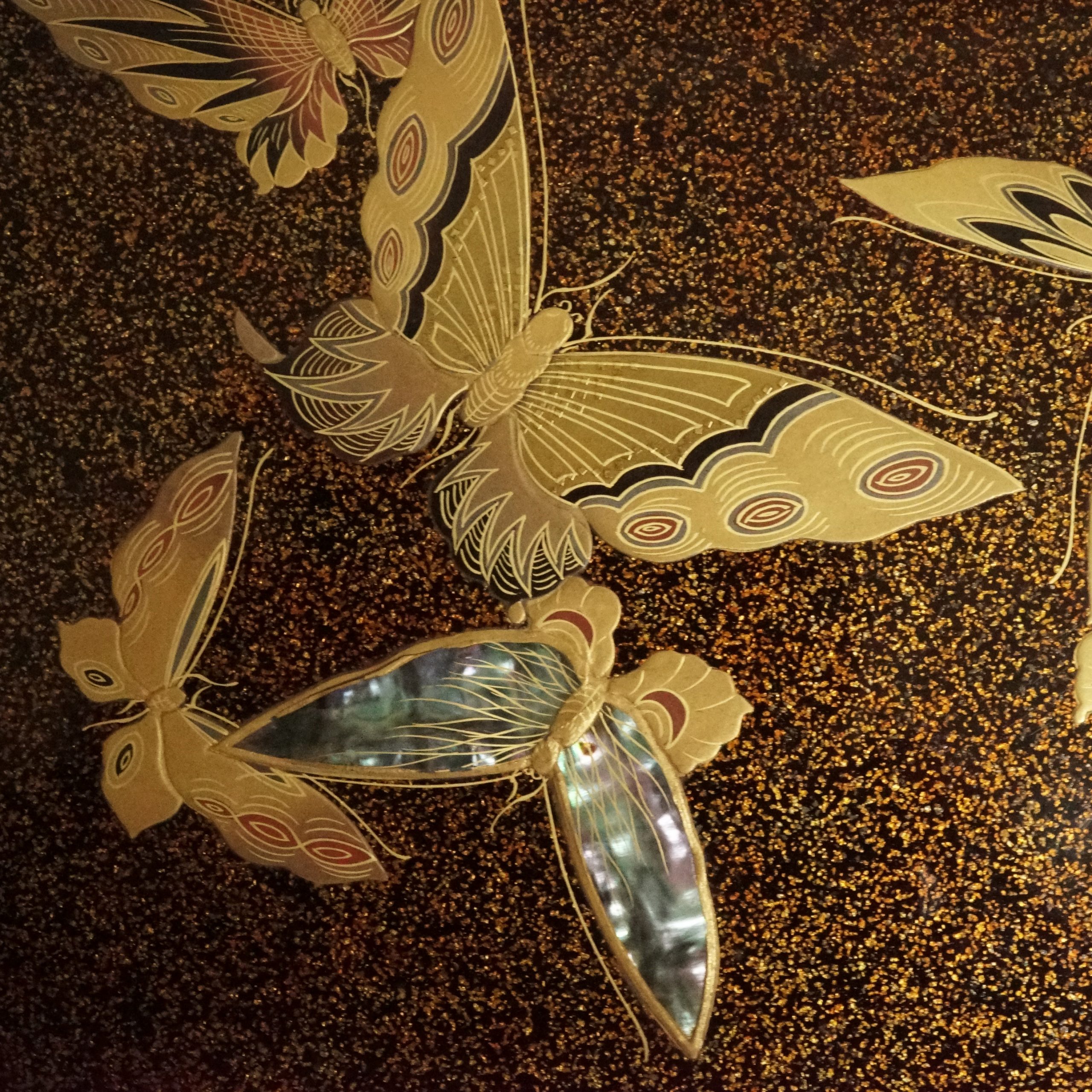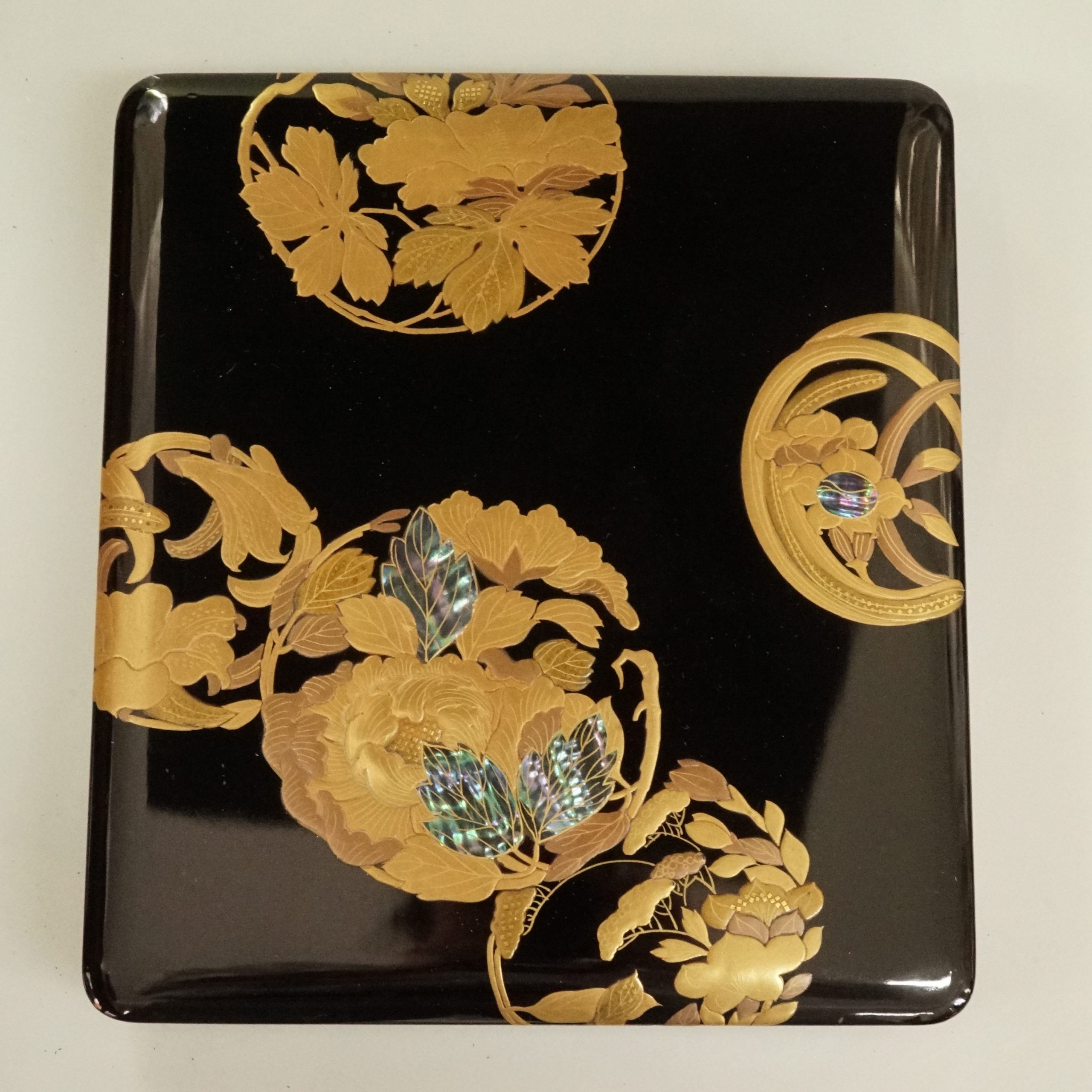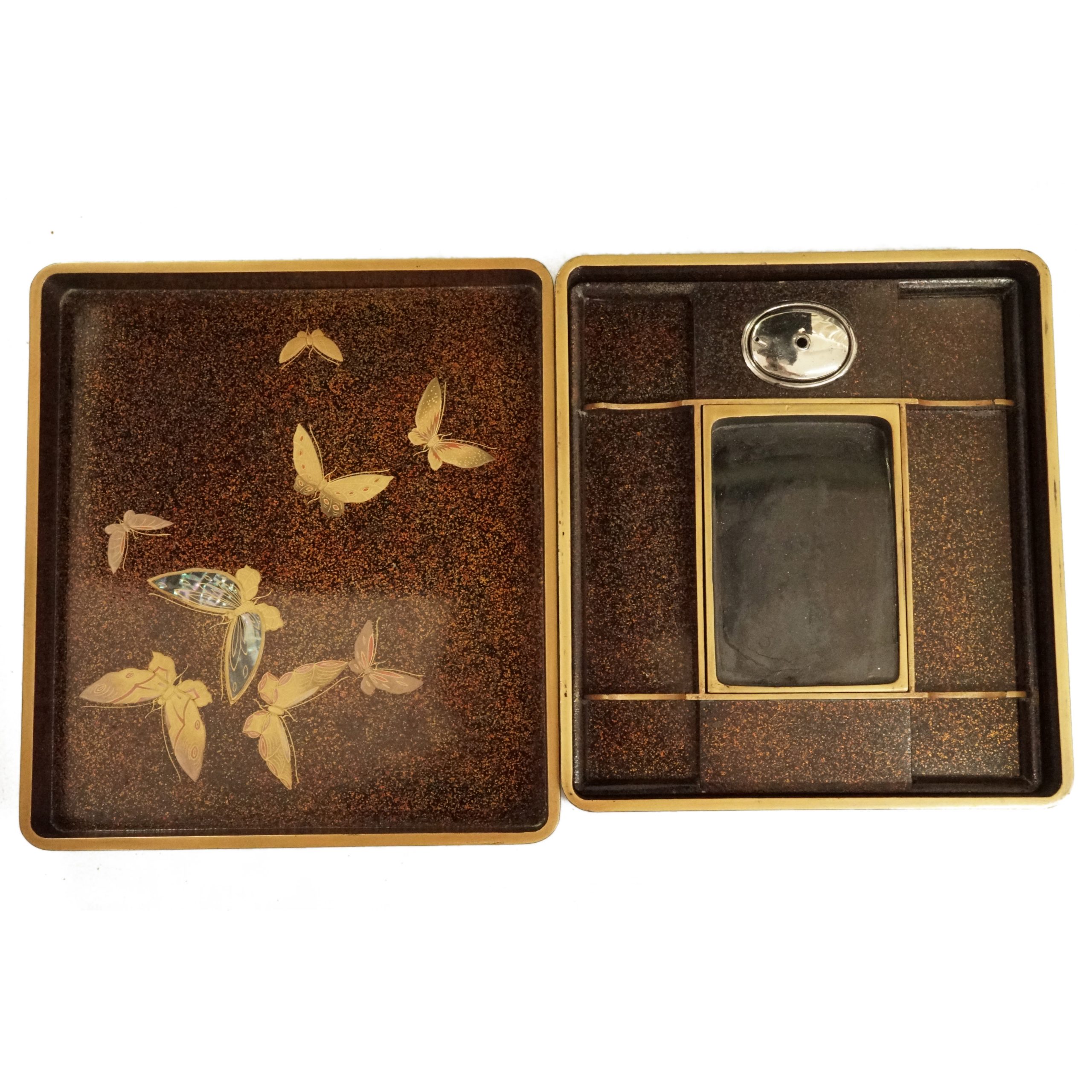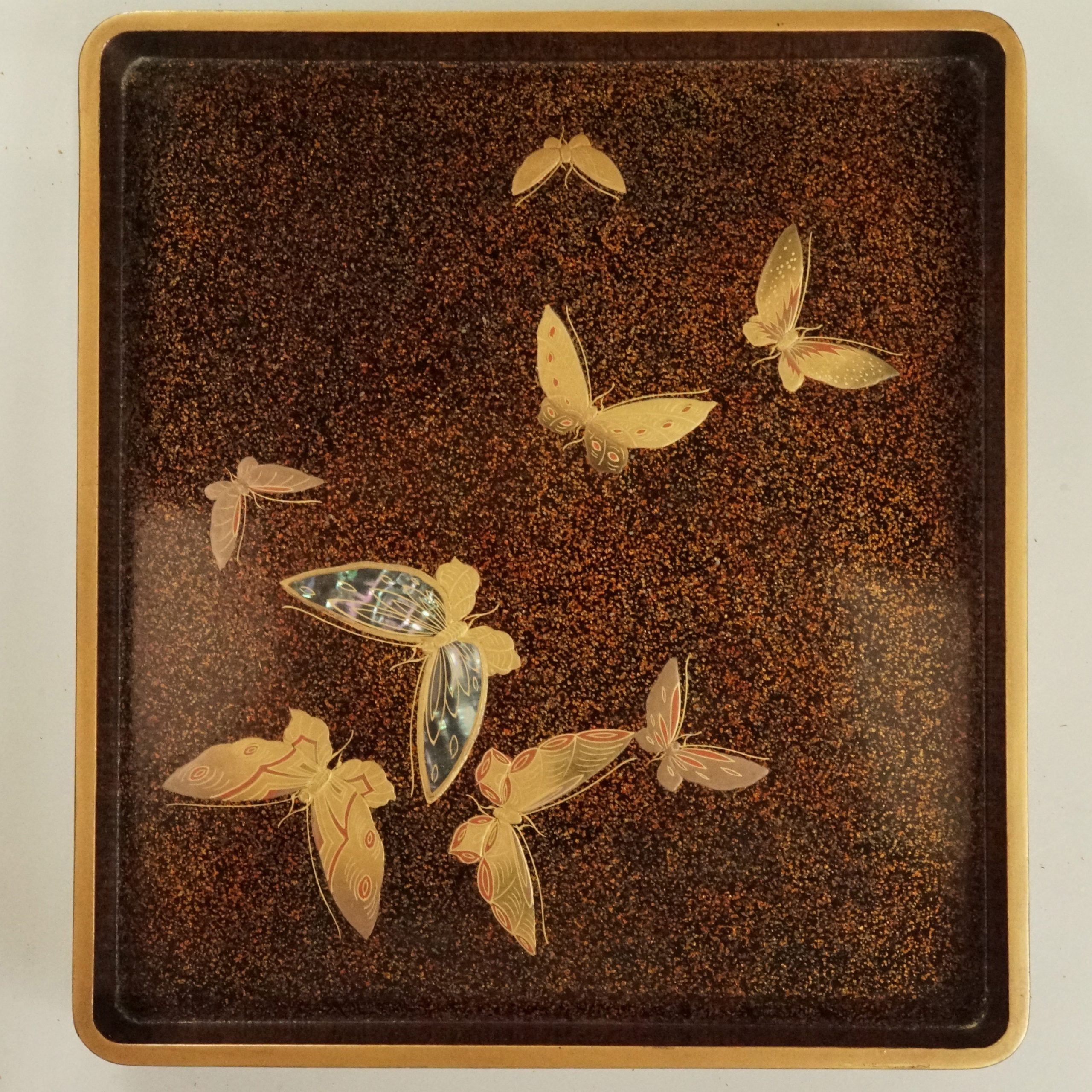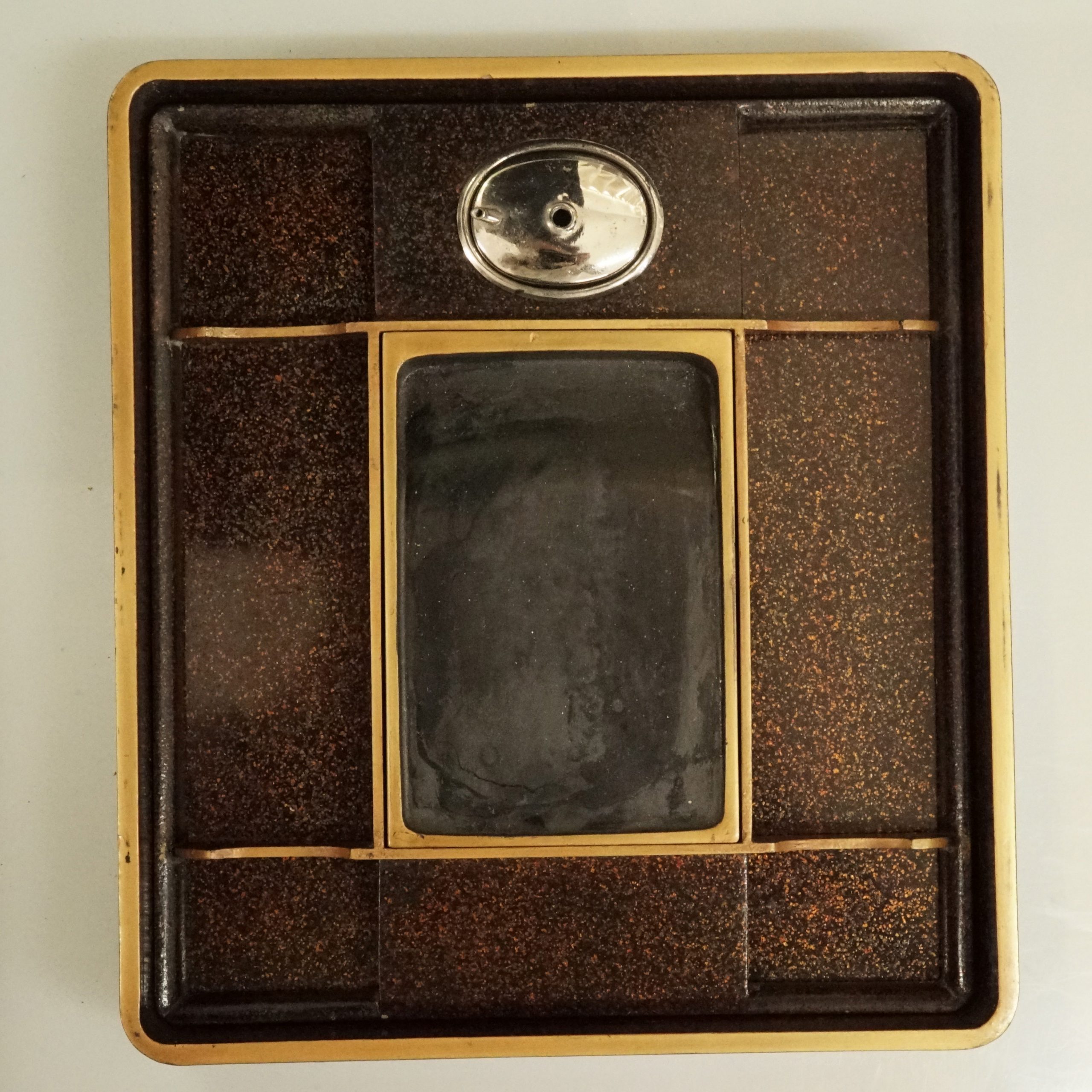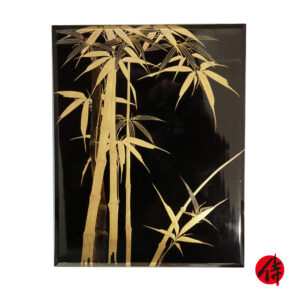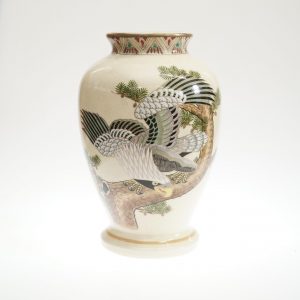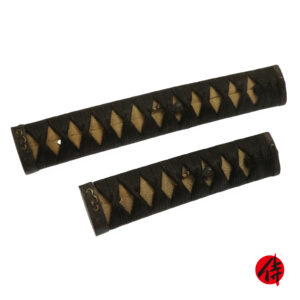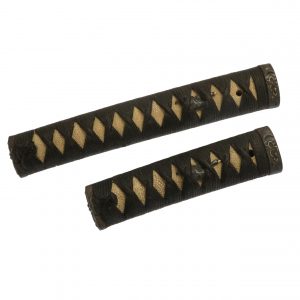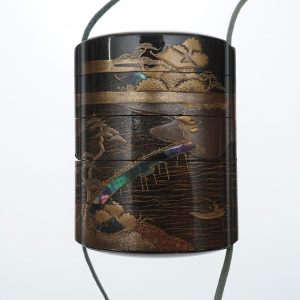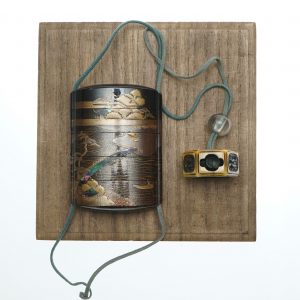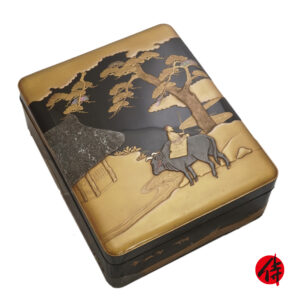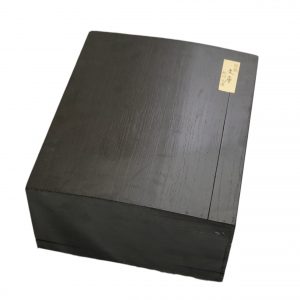Title: Chou ni Hanawa Chirashi Bunko and Suzuribako
Description
Bunko is a kind of box, and it is also called Bunko Bako. It has been used to store books, personal belongings, or valuables. Since ancient times, Japanese people put essential things in boxes customarily. Furthermore, they developed various techniques to decorate packages.
Suzuri Bako (硯箱) is a type of box in which writing implements such as writing brushes, ink sticks, or inkstone are stored. Also, some people used it to put a small knife or calendar. Suzuri Bako is often made from lacquered wood. *Makie (蒔絵) and *Raden (螺鈿, please see the description below) are popular ornamental techniques for this item. Artisans developed various skills to decorate boxes.
Each box has a rectangular shape with a rounded corner, and each of them is colored with black lacquer. Hanawa (花輪, a circle-shaped pattern of several flowers) motif decorates boxes. Due to the Raden decoration, some parts look like shining jewels.
Chrysanthemum symbolizes fall, and it has been appreciated in Japan since ancient times. As its petals form radially, the chrysanthemum has been likened to the sun. That is why this flower pattern is treated as the symbol of perpetual youth and longevity or good health.
Japanese apricots begin to bloom in winter when snow still covers their trees; therefore, people consider that this flower tells spring arrival. People appreciate its adorable petal shape and scent, gracefully branched tree, and compose many poems. As it comes out in the cold season, it is said it symbolizes perseverance and vitality.
Peony represents happiness, wealth, nobleness, and gorgeousness. This flower pattern has been treated as a kind of good-omen motifs that become a rich harvest sign. Peony is called “Botan (牡丹)” in Japanese. When we write this flower’s name in Japanese, its second letter has the meaning: medicine of mountain hermit that would give us eternal youth. Based on the meaning of this letter, the peony pattern symbolizes eternal youth and longevity.
Chou (蝶, butterfly) pattern is designed at the back of the lid. A larva becomes a chrysalis, and it grows up to a butterfly. As this insect changes its looks, it symbolizes reborn; therefore, Samurai loved the butterfly pattern. Also, as butterflies make a couple on good terms, this motif represents happy marriage.
These boxes are a gem that is designed with lots of good-luck talisman patterns such as chrysanthemum, Japanese apricot, peony, butterfly, and etcetera. They are useful to store your items. Alternatively, you can also display it to enjoy as one of the interior decorations in your room.
*Makie……A typical Japanese lacquer art technique developed uniquely in Japan for about 1200 years. Firstly, it needs to draw a picture with lacquer on the surface with a thin brush. Next, sprinkle the gold powder from above to show the pattern before the lacquer hardens. This technique makes a gorgeous and elegant look to works.
*Raden…… It is a kind of decorative technique that is often used for traditional craftworks. It uses the pearl part of seashells and put it into the engraved surface of lacquer or wood. Thanks to its iridescent luster, it gives a luxurious look to works.
*As these items are antique, please check each photo and ensure their condition.
(Bunko-04)

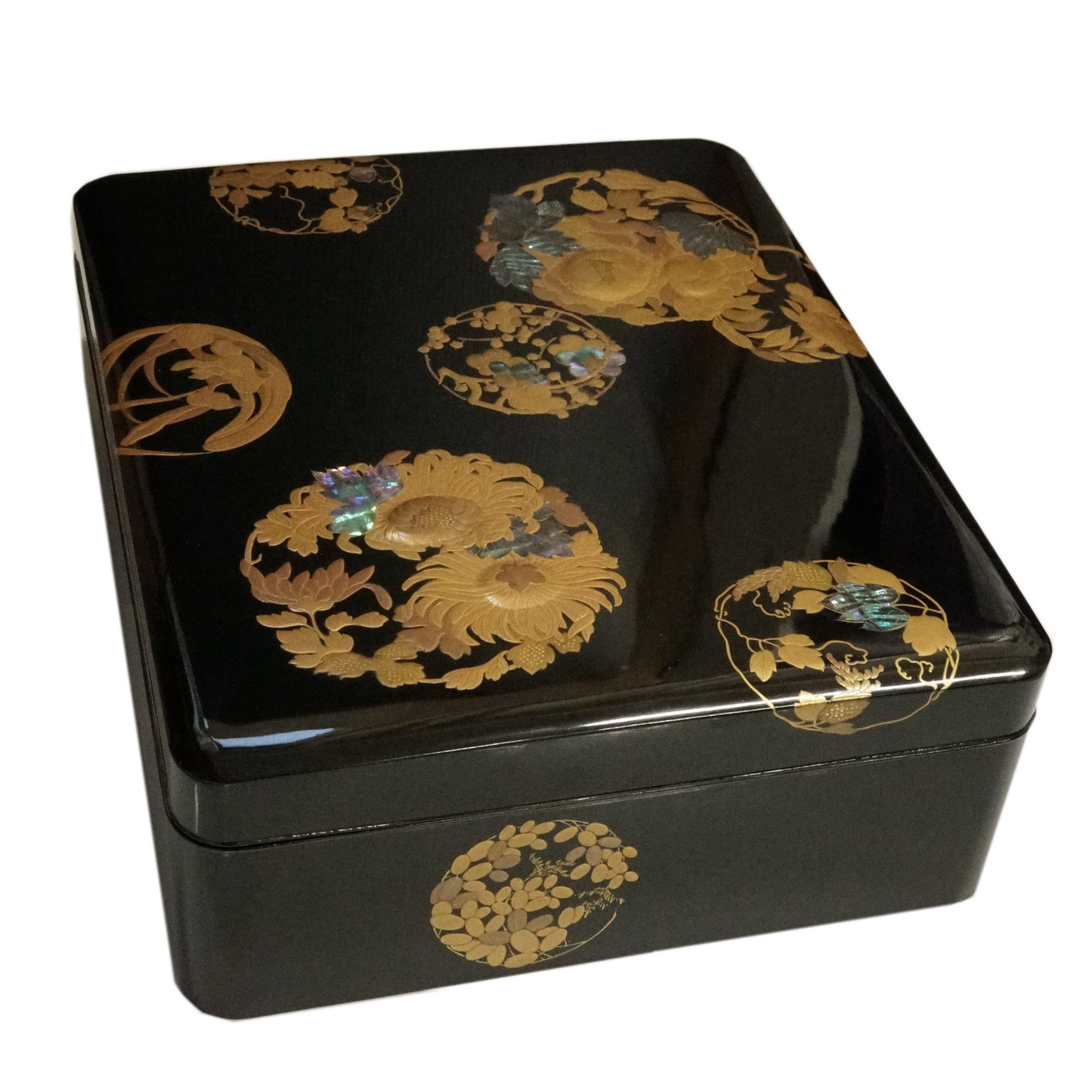
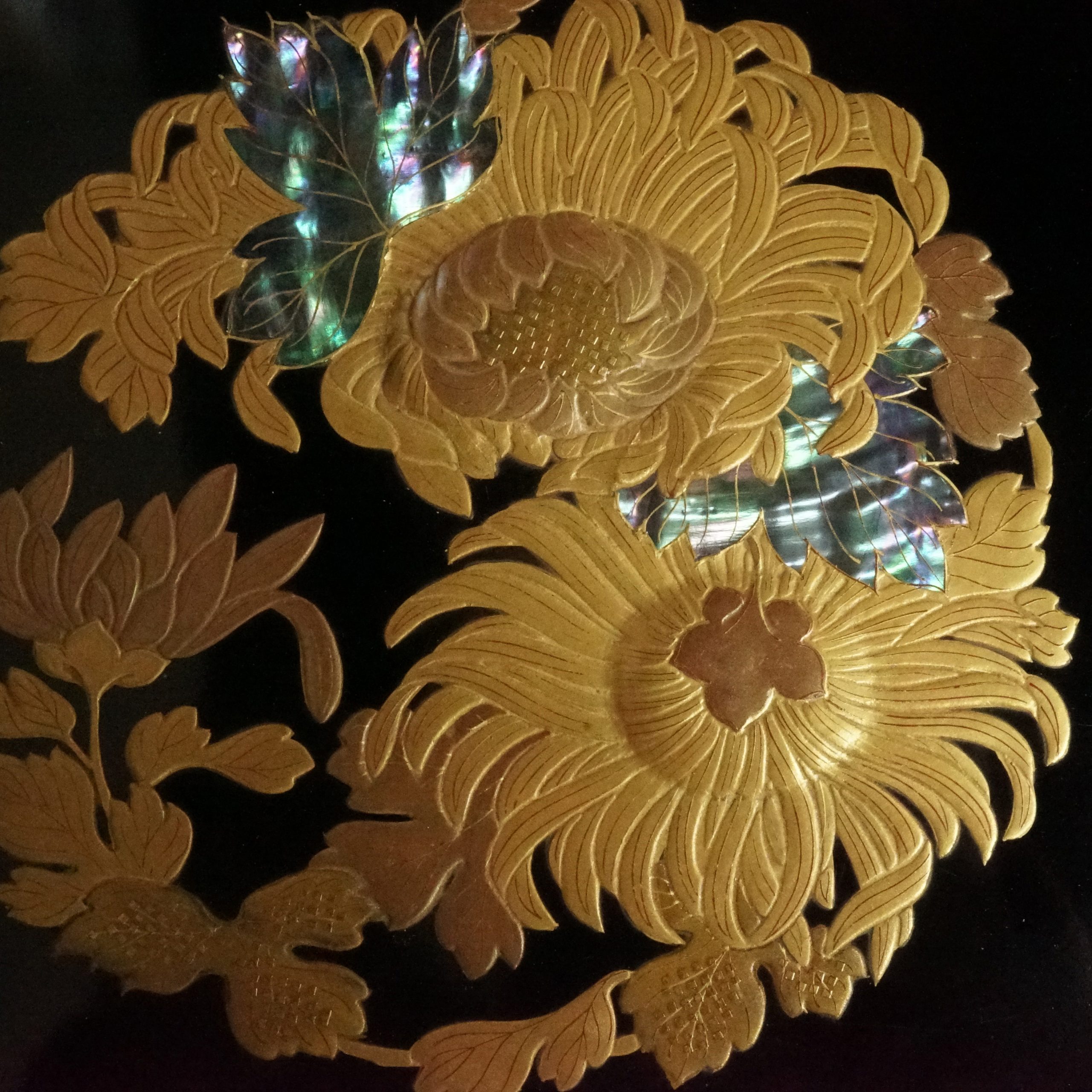
(Suzuribako-05)
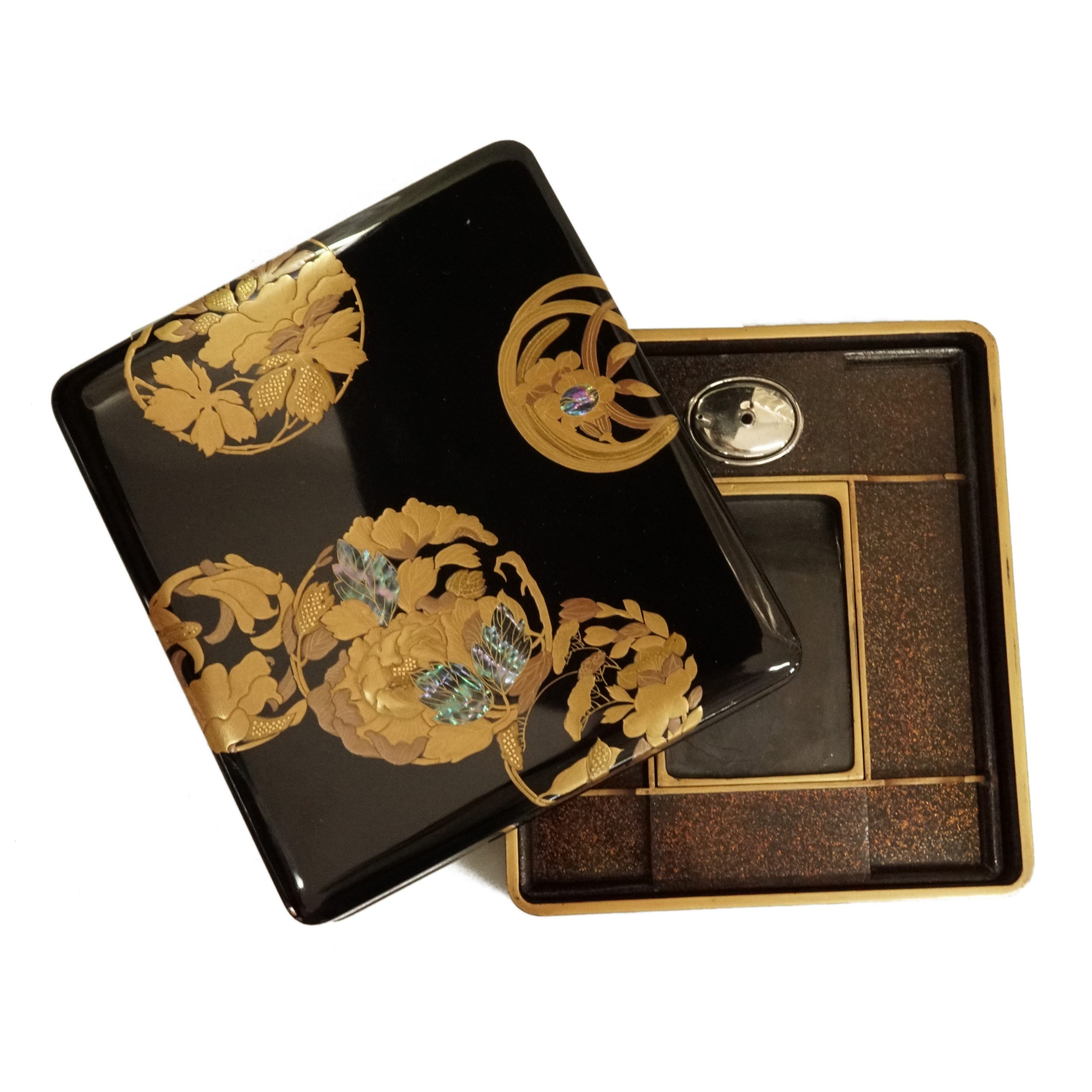

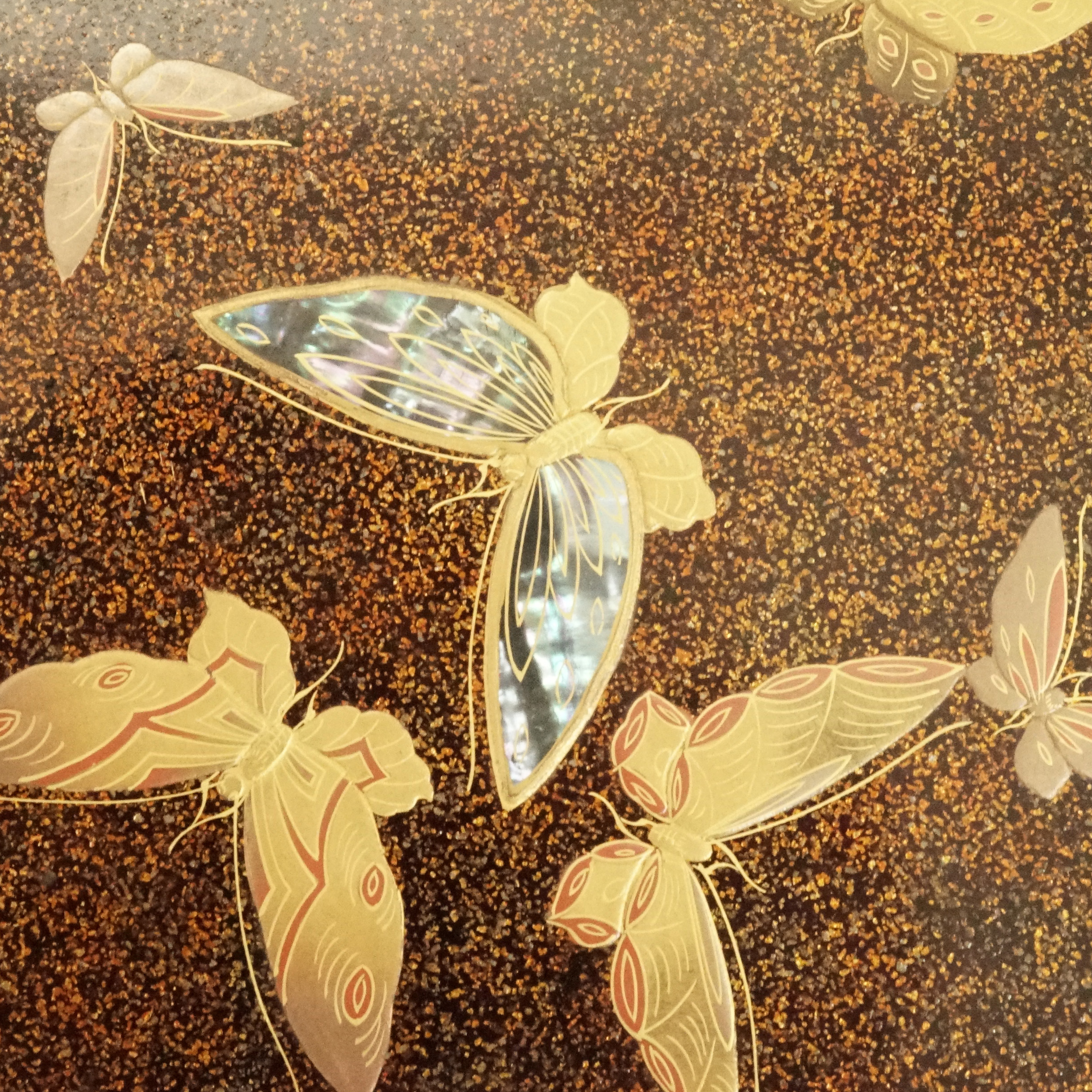
—————————————————————————————————————
【About us】
Samurai Museum is located in Tokyo, Japan, exhibiting antique artifacts related to the Samurai history. Samurai Museum Shop is the place for those who are interested in Japanese culture and craftsmanship. We deal with antique Samurai swords/armor, traditional crafts made in Japan and so on.
【Payment method】
We accept payment through Stripe (Credit card), PayPal, Apple Pay or ChromePay, all of which are secure payment methods. If you prefer other payment method, please contact us. After confirming your payment, we will apply for an export permit. You may either pay in JPY, USD, AUD, EUR or GBP. The price is set in Japanese Yen. Prices in other currencies are automatically calculated based on the latest exchange rate.

【Shipping duration】
We normally ship via EMS (Express Mail Service) provided by Japan Post. It usually takes at least 5-14 days to deliver the package after you place an order. We offer Free International Shipping as long as we can ship your order by EMS. If you prefer other shipping carriers, please contact us.
We will inform you of the order’s tracking number via email. Please make sure you fill out your valid email address correctly.
*If you like to make sure if EMS shipping is available to your country, please contact us.

【How to make sure the condition】
Please keep in mind that what you are going to purchase is an antique item. We uploaded high resolution photos for you to check its condition thoroughly. If you like to see more photos with different angles, please feel free to contact us. We will be happy to send them to you so that you can make informed decision.
It is essential for us to know that you are happy with your choice of antique box and we are prepared to use the best of our ability to serve you.
Would you like see some more antique items for sale? Please check the link below. We hope you can find your favorite item.
https://www.samuraimuseum.jp/shop/product-category/antique/

